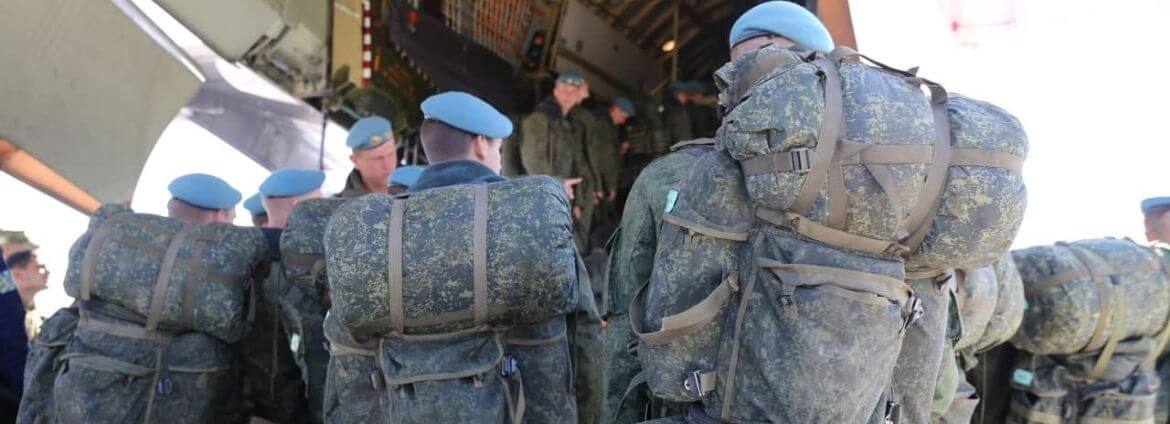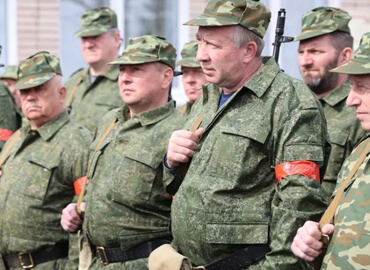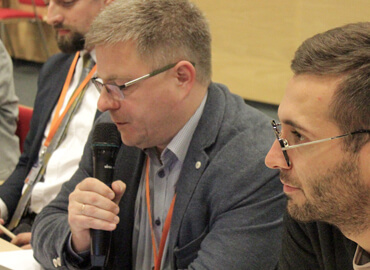On Friday, Belarusian servicemen from the CSTO contingent, brought to Kazakhstan at the request of the country’s President, returned home on Russian planes.
Despite returning home, the story is unlikely to end there.
Most likely, the participation of the Belarusian military in the «peacekeeping» mission in Kazakhstan will have far-reaching consequences both for Belarus itself and for the entire region.
It is symbolic that the operation in Kazakhstan was the first foreign military operation in which Belarusian military personnel took part since the withdrawal of Soviet troops from Afghanistan in 1989. The only exception was the dispatching of Belarusian soldiers to Lebanon. But then they took part in the mission of the Interim Force under the auspices of the UN, and not in the context of an ambiguous internal conflict with the world media writing the word «peacekeepers» in quotation marks. The level of participation is also incomparable. Belarus in Lebanon was represented by four medical specialists from the military hospital of the mission headquarters, along with a staff officer and two specialists from the West headquarters who served as part of the Italian contingent. But, as it is now fashionable to say, «this was different.» Belarus’s participation in UN peacekeeping activities is one of the most important spheres of the foreign policy activity of the state, contributing to an increase in its authority and influence in the international arena. Participation in the operation in Kazakhstan has nothing to do with such things. On the contrary, world public opinion is predisposed to view this operation as interference in the internal affairs of a sovereign state, as intervention and participation in the suppression of an uprising or even as occupation, which, to put it mildly, does not add points or influence to Belarus in the international arena and raises additional questions about the existence of Belarusian sovereignty and the degree of independence of decision-making by the Belarusian leadership.
The phrase «international ‘peacekeeping’ contingent» raises questions not only because of the word «peacekeeping.» The international contingent introduced into Kazakhstan is also a loosely applied term. It is reported that the CSTO peacekeeping contingent amounted to 2,030 people and 250 vehicles. Belarusian participation is estimated at 200 people – a specialized peacekeeping company from the 103rd separate airborne brigade. It is important to note that they were transported to Kazakhstan and back by Russian military transport aircraft. At the same time, the Belarusian military group is the second largest following Russia, though it makes up less than 10% of the entire contingent. The participation of other countries is even less.
The main forces of the contingent introduced into Kazakhstan are Russian, which raises a logical question as to whether military personnel from other CSTO member countries are included only to have reason to call the undertaking a collective and peacekeeping operation, and not a Russian invasion, which, in fact, it is to some degree.
It would be useful in this context to ask whether this method will in the future be used as a fig leaf to cover up the invasion of the Russian army into one of the CSTO member countries or some other country. Would a Russian invasion of, say, Ukraine become an «international peacekeeping operation» if, for example, a group of military doctors from Belarus, a squad of army cooks from Armenia, and a platoon of traffic controllers from Tajikistan take part in it? This question is far from an idle one. After all, in the modern world and the information war, euphemisms largely determine the attitude of entire countries to a particular event. And it is no coincidence that Russian aggression against Ukraine is stubbornly called a «conflict in the east of Ukraine,» an «internal Ukrainian conflict,» a «civil war,» and so on.
Another dangerous precedent is the excessively free interpretation of the provisions of the Charter of the Collective Security Treaty Organization. This document allows the provision of military assistance only in case of external aggression. This is provided for by Article 4 of the Charter, which states:
«In the event of an aggressive act (an armed attack that threatens security, stability, territorial integrity, or sovereignty) against any of the participating States, all other participating States, at the request of the participating State, will immediately provide it with the necessary assistance, including military assistance, and will also provide support that is at their disposal in the exercising of the right to collective defense, in accordance with Article 51 of the UN Charter.»
The CSTO Charter also provides for a mechanism for responding to internal threats in Article 2 of the Treaty. It establishes that «in the event of a threat to the security, stability, territorial integrity, and sovereignty of one or more participating States, or a threat to international peace and security, participating States immediately activate the mechanism of joint consultations to coordinate their positions and develop and take measures for assistance to such participating States to eliminate the threat that has arisen.»
As can be seen, this mechanism does not require external aggression, providing only joint consultations to develop a position, but not the introduction of military forces, which is possible only with the entry into force of Article 4 of the CSTO Charter. This explains the change in the rhetoric of Kassym-Jomat Tokayev, when overnight, «marauders» and «participants in mass riots,» as they were called before January 5, turned into «international terrorists» in his rhetoric. Following him, the very next day, Russia’s balanced position changed. According to the Russian Foreign Ministry, the events in Kazakhstan are «an externally-inspired attempt to undermine the security and integrity of the state by force, using trained and organized armed groups.» It was this wording that made it possible to interpret the events in Kazakhstan as external aggression and to put the Article 4 into effect.
It is worth noting that Article 4 of the CSTO Charter has been activated for the first time. Until now it has not been invoked, although there were occasions that would not have stretched it too far.
The situation in Tajikistan, which has a long border with Afghanistan, has been and remains chronically tense, but this country is being assisted by the Russian military and not by CSTO forces. CSTO forces were not sent to Kyrgyzstan in 2010, despite a direct request from then president, Roza Otumbayeva. It should be remembered that then, during the ethnic clashes between representatives of the titular nation and the Uzbek minority in the Osh and Jalal-Abad regions of Kyrgyzstan, more than two thousand people were killed, thousands were injured, and hundreds of thousands fled to Uzbekistan. It is worth noting that the overthrown president Kurmanbek Bakiyev also spoke out in favor of peacekeepers, but at that time it was considered an internal affair of Kyrgyzstan. Specifically, then Russian President Dmitry Medvedev said that the criterion for the introduction of CSTO forces is the violation by one state of the borders of another member state:
«We are not talking about this yet, because all the problems of Kyrgyzstan are rooted inside the country,» the Russian president said. «Rooted in the weakness of the former government, in their unwillingness to deal with the needs of the people. I hope that all the problems that exist today will be resolved by the authorities of Kyrgyzstan. The Russian Federation will assist,» he added.
But the most striking case of the non-use of CSTO forces was the last war in Nagorno-Karabakh between Armenia, which is a CSTO member and Azerbaijan, which is not a member, in the fall of 2020. Despite the death of thousands of Armenian soldiers, the appeal of Armenian Prime Minister Nikol Pashinyan remained unanswered. Russia’s position was that CSTO obligations do not apply to the territory of Nagorno-Karabakh. Even the consultation mechanism provided for in Article 2 of the CSTO Charter was not launched. However, unconvincing attempts to present the situation in Kazakhstan as external aggression convinced Pashinyan. Armenia sent its military to Kazakhstan. The decision of the Armenian prime minister resulted in harsh criticism from civil society and the opposition. As in the case with the Belarusian military, the Armenians flew to Kazakhstan on Russian planes. Obviously, as a gratitude for his service, Pashinyan expects more assistance from the CSTO in the event of another flare up of the conflict with Azerbaijan. On January 12, Pashinyan and Putin discussed the situation in Nagorno-Karabakh in a telephone conversation because the Armenian and Azerbaijani defense ministries had just accused each other of shelling, killing three Armenian servicemen and one Azerbaijani.
It is not known whether Pashinyan’s expectations will come to pass, but it can be said with confidence that the first practical use of CSTO forces took place. The genie is out of the bottle, and now decisions about their application in one place or another will be made faster and more willingly.
Appetite, as is known, comes with eating, and it is obvious that the situation with the CSTO forces will develop further and that their influence on the region will increase. During the CSTO online summit on the situation in Kazakhstan, Russian President Vladimir Putin proposed deploying CSTO forces on the territory of its member countries on a permanent basis. «It is better to send CSTO troops to all countries of the alliance in advance and place them at fixed military bases. This will help to quickly solve emerging local problems if anything comes up. Specifically, this would prevent ‘color revolutions,’ neutralize the use of Maidan tactics, and prevent situations from vacillating,» he said. Alexander Lukashenko went further and even pointed to the possible next use of CSTO forces. At the same event, Lukashenko said that Uzbekistan should learn from these events. «If not, then, according to our information, their eyes are cast on Uzbekistan,» he said.
Alexander Lukashenko should be more careful, and not only with words. He feels like a winner today and proudly struts, casting himself to those around him as a peacemaker and guarantor of «stability» not only for Belarus, but for the entire region. Perhaps from what happened in Kazakhstan though, it is worth having him learn a lesson. First, the removal of Nazarbayev and his clan from power demonstrated perfectly the total instability of various ingenious constructions of constitutional transit, the prerequisites for which he will try to create at the February referendum on amending the constitution. The influential and powerful Nazarbayev managed to hold out for less than three years. Lukashenko’s guarantees after he ceases to be the country’s leader will be valid for far less time. Additionally, the ostensible reason for the introduction of CSTO troops into Kazakhstan was the attack of «international terrorists.» And thanks to Alexander Lukashenko, his propagandists, and security officials, the number of people accused of terrorism in Belarus has long exceeded the number of all terrorist organizations combined. To declare someone as a terrorist, even a certain clothing color scheme may be enough for the authorities. But such rhetoric is a double-edged sword. When it will turn against Lukashenko himself is only a matter of time.










